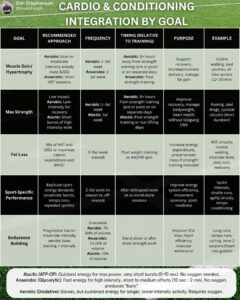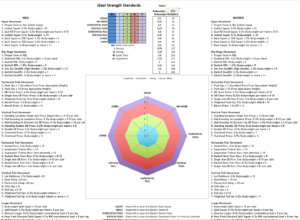The Importance of Crafting Effective Personal Training Programs
As a personal trainer, your role goes beyond simply guiding clients through exercises. Creating effective training programs is crucial for client success and satisfaction. A well-designed program can make all the difference in helping clients achieve their fitness goals and maintain their motivation throughout the journey.
When clients seek the guidance of a personal trainer, they are looking for expertise and support to help them navigate their fitness journey. By crafting personalized training programs, you demonstrate your commitment to their success and establish yourself as a trusted fitness professional.
One of the key benefits of effective program design is that it allows you to tailor workouts to meet the specific needs and goals of each client. Every individual has unique requirements, whether it\’s weight loss, strength building, or overall fitness improvement. By understanding these needs and designing programs accordingly, you can provide targeted solutions that yield optimal results.
Moreover, personalized training programs help create a sense of ownership and accountability for your clients. When they see that their program is tailored specifically to them, they feel valued and motivated to put in the effort required to achieve their desired outcomes. This personalized approach sets you apart from generic workout plans found online or in magazines.
Crafting effective training programs also enables you to address any limitations or challenges your clients may have. As a personal trainer, you understand that not everyone starts at the same level of fitness or has similar capabilities. By taking into account factors such as age, medical history, previous exercise experience, and any physical limitations, you can design programs that are safe yet challenging for each individual.
Additionally, an effective program design helps ensure progression and avoids plateaus. By incorporating variety into training sessions and gradually increasing the difficulty over time, you keep clients engaged and motivated. This prevents boredom while continuously challenging their bodies to adapt and improve.
By prioritizing effective program design as a personal trainer or fitness coach, you show your dedication to providing exceptional service to your clients. Your expertise in creating personalized training programs sets you apart as a professional who understands the importance of individualized attention and the impact it can have on achieving fitness goals.
Assessing Client Needs
As a personal trainer, one of the first steps in creating an effective training program is to assess your client\’s needs. This involves understanding who they are, what their fitness goals are, and any limitations they may have. By conducting a thorough evaluation, you can gather essential information that will guide your program design and ensure it aligns with their aspirations and abilities.
Understanding Client Goals and Limitations
To begin the assessment process, schedule a comprehensive initial consultation with your client. During this session, take the time to listen actively and ask relevant questions to gain insights into their fitness goals. Understand what they hope to achieve through personal training, whether it\’s weight loss, muscle gain, improved athletic performance, or overall health and wellness.
In addition to understanding their goals, it\’s crucial to be aware of any limitations or challenges they may face. Factors such as age, medical history, previous exercise experience, and existing injuries or conditions can significantly impact program design. By considering these factors upfront, you can tailor the training program to meet their individual needs while ensuring safety and effectiveness.
Performing Physical Assessments
Once you have gathered information about your client\’s goals and limitations, it\’s time to conduct physical assessments. These assessments provide valuable baseline data about your client\’s current fitness level and help identify areas for improvement.
During physical assessments, evaluate various aspects of fitness such as strength, flexibility, cardiovascular endurance, and body composition. Utilize tools like body composition analysis techniques (such as skinfold measurements or bioelectrical impedance), movement screenings (to assess mobility and stability), and fitness tests (such as push-ups or timed runs) to gather relevant data.
By performing these assessments systematically, you can obtain objective measurements that serve as benchmarks for tracking progress throughout the training program. This data-driven approach allows you to design personalized workouts that address specific areas of improvement while capitalizing on existing strengths.
Remember that client evaluation is an ongoing process throughout the training program. As your clients progress, their goals and limitations may evolve, requiring adjustments to the program. Regularly reassessing their needs and physical capabilities ensures that you continue to provide effective and tailored training sessions.
Setting SMART Goals with Clients
When working with clients, setting SMART goals is a fundamental step in creating effective personal training programs. By educating clients about the concept of SMART goals and collaborating on goal setting, you can ensure that their objectives are clear, realistic, and achievable.
Understanding SMART Goals
SMART is an acronym that stands for Specific, Measurable, Achievable, Relevant, and Time-bound. Educate your clients about each component of SMART goals to help them understand the importance of setting objectives that are well-defined and actionable.
- Specific: Encourage clients to define their goals in specific terms. For example, instead of saying \”I want to lose weight,\” encourage them to specify how much weight they want to lose or what body measurements they want to achieve.
- Measurable: Help clients establish measurable criteria to track their progress. This could include tracking changes in body composition, strength gains, or improvements in cardiovascular endurance. Measurable goals allow both you and your client to objectively assess their progress over time.
- Achievable: It\’s essential for goals to be attainable within the client\’s capabilities and resources. Guide your clients in setting challenging yet realistic goals that take into account their current fitness level, lifestyle factors, and any limitations they may have.
- Relevant: Ensure that the goals set by your clients align with their aspirations and overall fitness journey. The objectives should be relevant to their long-term vision for health and wellness.
- Time-bound: Establishing a timeline helps create a sense of urgency and accountability. Encourage your clients to set target dates or milestones for achieving their goals. This provides motivation and allows for periodic evaluation of progress along the way.
Collaborating on Goal Setting
Engage in open communication with your clients during the goal-setting process. Take the time to understand their desired outcomes, preferences, and motivations behind wanting to achieve those goals. By actively listening and involving them in the decision-making process, you can create a sense of ownership and commitment to their goals.
Work together with your clients to set SMART goals that are challenging yet attainable. Provide guidance based on your expertise as a personal trainer, ensuring that the goals align with their abilities and aspirations. Collaborating on goal setting establishes a partnership between you and your clients, fostering trust and motivation throughout their fitness journey.
Remember that goal planning is not a one-time event but an ongoing process. Regularly revisit and reassess the goals with your clients to ensure they remain relevant and aligned with their progress. By continuously monitoring and adjusting their objectives, you can keep them motivated and engaged in their personal training program.
Conducting Baseline Assessments
Baseline assessments play a crucial role in creating effective personal training programs. These initial assessments provide a starting point to track progress, identify areas for improvement, and personalize the training program based on individual strengths and weaknesses.
Importance of Baseline Assessments
Baseline assessments serve as a benchmark to measure progress throughout the training program. By establishing a baseline, you can objectively evaluate your client\’s current fitness level and track their improvement over time. This data-driven approach allows you to design personalized workouts that address specific needs and goals.
Moreover, baseline assessments help identify areas of strength and weakness in your clients. By understanding their capabilities from the start, you can tailor the training program to capitalize on their strengths while targeting areas that require improvement. This personalized approach ensures that each client receives an individualized program designed to optimize their results.
Types of Baseline Assessments
When conducting baseline assessments, it\’s important to evaluate various aspects of fitness. Here are some key types of assessments to consider:
- Strength Assessments: Measure your client\’s muscular strength using exercises compound exercises such as bench press, squats, or deadlifts. Be sure to select exercises that your client is confident in performing and you are confident in coaching. Utilizing the traditional 1-Rep-Max (1RM) may not be appropriate for all clients, instead utilizing a multi-rep max and an estimated 1RM calculator or a relative strength test may be a more suitable option. These assessment help determine their current strength levels and provides insights into potential muscle imbalances.
- Flexibility Assessments: Evaluate your client\’s range of motion through exercises like shoulder stretches or hamstring tests. Flexibility assessments highlight areas where improvements can be made and help prevent injuries related to limited mobility.
- Cardiovascular Fitness Assessments: Test your client\’s cardiovascular endurance by assessing their ability to sustain physical activity over a period of time. Examples include running tests or step tests. These evaluations provide insights into aerobic capacity and overall cardiovascular health.
- Body Composition Analysis: Utilize tools such as body fat calipers or bioelectrical impedance devices to assess body composition. This evaluation helps determine the percentage of body fat versus lean muscle mass, providing valuable information for designing nutrition and exercise plans.
By incorporating these types of baseline assessments, you can gather comprehensive data about your client\’s current fitness level. This information serves as a foundation for designing personalized training programs that address their specific needs and goals.
Choosing the Right Programming Variables
When designing effective personal training programs, it\’s essential to understand and choose the right programming variables. These variables include exercise selection, intensity, volume, frequency, and rest periods. By considering client goals, preferences, and individual capabilities, you can tailor the program to meet their specific needs and optimize their results.
Understanding Programming Variables
Programming variables are the key components that determine the structure and content of a training program. Here are some important variables to consider:
- Exercise Selection: Choose exercises that align with your client\’s goals and abilities. Whether it\’s strength training, cardiovascular conditioning, or flexibility improvement, select exercises that target the desired muscle groups or energy systems.
- Intensity: Determine the level of effort required for each exercise or workout session. Intensity can be adjusted by manipulating factors such as weight load, resistance level, or speed of movement. It should challenge your clients without compromising safety or form.
- Volume: Volume refers to the total amount of work performed in a training session or over a given period. It includes factors like sets, reps, distance covered, or time spent exercising. Consider your client\’s fitness level and goals when determining an appropriate volume for their program.
- Frequency: Frequency refers to how often your clients will engage in exercise sessions per week. Consider their availability and commitment level when deciding on an appropriate frequency. The balance between providing enough stimulus for progress while allowing adequate recovery time.
- Rest Periods: Rest periods refer to the duration of rest between sets or exercises. The length of rest periods influences factors such as muscular endurance versus strength development. Adjust rest periods based on your client\’s goals and desired training outcomes.
Tailoring Programs to Client Needs
To create effective personal training programs, it\’s crucial to tailor them to your client\’s specific needs and goals. Take into account factors such as their fitness level, preferences, previous exercise experience, and any limitations they may have.
Design programs that align with your client\’s goals, whether it\’s strength training, weight loss, or overall fitness improvement. Consider their individual capabilities and progress when selecting programming variables. As your clients progress and provide feedback, be prepared to make adjustments to the program to ensure continued challenge and growth.
By choosing the right programming variables and customizing the program to your client\’s needs, you can create a training experience that is both effective and enjoyable. This personalized approach enhances client satisfaction and increases the likelihood of long-term adherence to their fitness journey.
Designing Varied and Progressive Sessions (progression models and periodization)
To create effective personal training programs, it\’s crucial to design sessions that are both varied and progressive. Incorporating variety into training sessions keeps clients engaged and motivated, while progressive workouts gradually increase the difficulty and intensity of exercises to challenge their bodies and drive continuous improvement.
Importance of Varied and Progressive Sessions
Keeping training sessions varied is essential for client engagement and motivation. By introducing new exercises, equipment, or workout formats, you can prevent boredom and monotony. Variety also helps target different muscle groups, energy systems, or movement patterns, leading to a more well-rounded fitness program.
Progressive workouts are equally important as they allow clients to continually challenge themselves and make progress toward their goals. Gradually increasing the difficulty or intensity of exercises ensures that clients don\’t plateau or reach a point where they no longer see improvements. This progression keeps them motivated by providing tangible evidence of their growth.
Utilizing Progression Models and Periodization
To achieve varied and progressive sessions effectively, personal trainers can implement progression models such as linear progression, undulating periodization, conjugate method, or block periodization.
- Linear Progression: In this model, the load or intensity of exercises is gradually increased over time. It is commonly used for strength training programs where clients aim to lift heavier weights progressively. This model works well for beginners and intermediates but can also run the risk of low variety in exercise selection.
- Undulating Periodization: This model involves alternating between different intensities or rep ranges within a given training cycle. It allows for variation in workload while still focusing on specific goals such as strength, power, or hypertrophy. This model works well for most experience levels when implemented well and all variables are managed.
- Conjugate: The conjugate method incorporates multiple types of training simultaneously to improve various aspects of fitness. It combines strength work with speed work or explosive movements to enhance overall performance.
- Block Periodization: Block periodization divides the training program into distinct phases or blocks with specific focuses. Each block targets different aspects of fitness (e.g., strength, power, endurance) to optimize performance and prevent plateaus.
By utilizing these progression models, you can systematically vary the training stimulus and ensure continuous progress for your clients. Periodizing the training program allows for strategic planning and prevents stagnation by introducing different training emphases at specific times.
Remember to regularly assess your clients\’ progress and adjust the program accordingly. As they become more proficient in certain exercises or achieve their initial goals, modify the variables to continue challenging them and driving further improvements.
Monitoring Progress and Making Adjustments
As a personal trainer, monitoring client progress is crucial for ensuring the effectiveness of their training program. By regularly tracking progress through measurements, performance tests, and subjective feedback, you can evaluate results and make necessary adjustments to optimize their training experience.
Tracking Client Progress
To effectively monitor client progress, establish a system for regular assessments. This may include taking measurements such as body weight, body composition, or circumference measurements. Performance tests can also be conducted to assess strength, endurance, or other specific fitness parameters. Additionally, encourage clients to provide subjective feedback on how they feel during workouts and their overall satisfaction with the program.
Utilize tracking tools and software to streamline the process and maintain accurate records of client progress. These tools can help you visualize trends over time and identify areas for improvement. By having objective data at your disposal, you can make informed decisions when modifying the training program.
Adapting Programs for Optimal Results
Based on the information gathered from tracking client progress, it\’s important to make necessary adjustments to their training programs. Consider factors such as client goals, individual preferences, and any changes in their physical capabilities or lifestyle circumstances.
Evaluate the effectiveness of each exercise or component of the program in relation to the desired outcomes. If certain exercises are not yielding the expected results or if clients express dissatisfaction with specific aspects of the program, modify accordingly. Continuously assess whether the intensity, volume, frequency, or exercise selection aligns with their current needs.
Remember that personal training programs should be dynamic rather than static. As clients progress and achieve milestones or encounter new challenges along their fitness journey, adaptability becomes essential. Regularly reevaluate and modify programs to ensure ongoing success and keep clients motivated.
By consistently monitoring client progress and making appropriate adjustments based on their goals and preferences, you demonstrate your commitment to their success as a personal trainer. This level of attentiveness ensures that each client receives a personalized and effective training program that evolves with their changing needs.
Optimizing Personal Training Programs
Crafting effective personal training programs requires careful assessment, goal setting, and program design. By following these guidelines and continuously monitoring client progress, personal trainers can create personalized and effective training programs that yield optimal results.
Throughout the process of designing a training program, it\’s crucial to assess client needs thoroughly. Understanding their goals, limitations, and preferences allows you to tailor the program to meet their individual requirements. By conducting baseline assessments, you establish a starting point for tracking progress and identifying areas for improvement.
Setting SMART goals with clients ensures that objectives are specific, measurable, achievable, relevant, and time-bound. Collaborating with clients during the goal-setting process fosters ownership and commitment to their fitness journey.
Choosing the right programming variables such as exercise selection, intensity, volume, frequency, and rest periods is essential for creating effective training programs. By considering client goals and capabilities when selecting these variables, you can design workouts that align with their aspirations while challenging them appropriately.
Designing varied and progressive sessions keeps clients engaged and motivated. Incorporating variety into training sessions prevents boredom while progressively increasing difficulty ensures continuous improvement.
Monitoring client progress through measurements, performance tests, and subjective feedback allows you to evaluate results objectively. By tracking progress using tools and software, you can identify areas for improvement and make necessary adjustments to optimize the training program.
In conclusion, optimizing personal training programs requires a comprehensive approach that encompasses assessment, goal setting, program design, monitoring progress, and making necessary adjustments along the way. By following these guidelines as a personal trainer or fitness coach, you can enhance your clients\’ experience by providing personalized and effective training programs tailored to their unique needs. Continuously evaluating and modifying programs ensures ongoing success in helping clients achieve their fitness goals.









